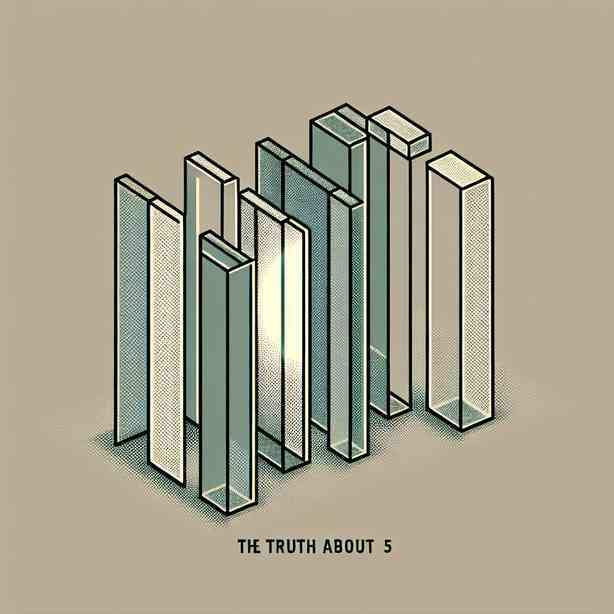
Creating an 8000-token piece of content requires a thorough understanding of the topic at hand. “The Truth About Five Bars” is an intriguing title that invites exploration into various aspects, starting with a definition of what “five bars” could refer to in different contexts, such as bars of music, bars in a social or physical setting, and even metaphorical interpretations.
To craft a comprehensive narrative, we’ll discuss the cultural significance of bars in music, delve into the social aspects of physical bars, explore various interpretations of “five bars” in literature and art, and finally connect these thoughts under a unifying theme that emphasizes interconnectedness and human experience.
To begin, let’s establish a clear definition of what five bars can signify in the context of music. In many genres, especially hip-hop and rap, a “bar” refers to a measure of musical time that typically contains multiple beats. This structure is crucial in composing lyrics, as it dictates flow, rhythm, and creative expression. When we talk about five bars, we often refer to a concise yet impactful lyrical snippet. These five bars can encapsulate emotions, tell stories, or convey powerful messages in a succinct format.
Understanding the importance of these five bars extends beyond just music composition; they reflect a broader human experience. In every culture, storytelling is an integral part of our history and identity. Music, as a form of storytelling, allows for emotional connection and cultural expression. In hip-hop, for instance, artists utilize their five bars to share their realities, struggles, and triumphs, making their narratives relatable while resonating with listeners on a personal level.
Transitioning to the social aspect, physical bars serve as both social venues and cultural hubs in many societies. These establishments foster community and camaraderie, often acting as the backdrop for shared experiences. When we examine the concept of a bar, we also note that these spaces are where people come together to celebrate, unwind, and connect with one another.
Five bars, then, might metaphorically represent a shared moment in time—an interaction, a toast, a laugh, or a discussion that shapes relationships. Whether enjoying live music, sharing a drink, or engaging in conversations, each interaction in these spaces can leave an indelible mark on individuals, thereby enriching the tapestry of human experience.
To dive deeper, we must also consider the cultural implications of bars around the world. In some places, bars are seen as progressive spaces for social change, where discussions around critical issues such as equality, justice, and freedom take place. Here, five bars might symbolize the snippets of powerful dialogue exchanged over drinks that inspire change. Many activists have utilized social gathering places to mobilize support and spread awareness on vital topics.
The structure of five bars can also resonate in literary contexts, encapsulating wisdom, humor, or poignant life lessons in a brief format. Poets and writers have often relied on brevity to deepen the impact of their messages. This kind of succinct expression not only resonates with audiences but also transcends time and space, much like music.
For instance, a poet might spend five bars weaving a narrative of love lost, hopes dashed, or dreams attained, illustrating the raw human emotions that bind us together. This technique captures the essence of storytelling—sharing experiences that resonate universally, regardless of the audience’s background or culture.
Now, as we explore the concept of “five bars,” we’re led to the intersection of various art forms. Music, literature, visual arts, and performances often overlap, creating a rich tapestry that encourages us to reflect on the interconnectedness of our experiences. As creators and consumers of art, we find ourselves partaking in a collective journey that transcends individual stories.
In conclusion, the truth about five bars is not merely about describing their literal significance in music or social spaces; it is about recognizing their potential to unite us through shared experiences. Whether through lyrics that resonate with personal struggles, social gatherings that foster connections, or literary phrases that evoke emotion, these five bars represent the collective voice of humanity.
By drawing connections across different interpretations of five bars, we see that they embody the essence of communication—an ever-present force in shaping our identities. Ultimately, five bars, in whatever context we apply them, reflect a deeper truth about human connection and the stories that bind us all together. By understanding and appreciating these facets of life, we can cultivate empathy and reinforce the importance of community in our increasingly interconnected world.
Every moment shared, every story told, and every emotion expressed through those five bars contributes to a colorful mosaic of human experience, reminding us of the power of art, music, and communication in connecting us all. As we engage with these themes in our daily lives, let us celebrate the beauty of expression in its many forms, ensuring that the rich legacy of storytelling continues to thrive for generations to come.


